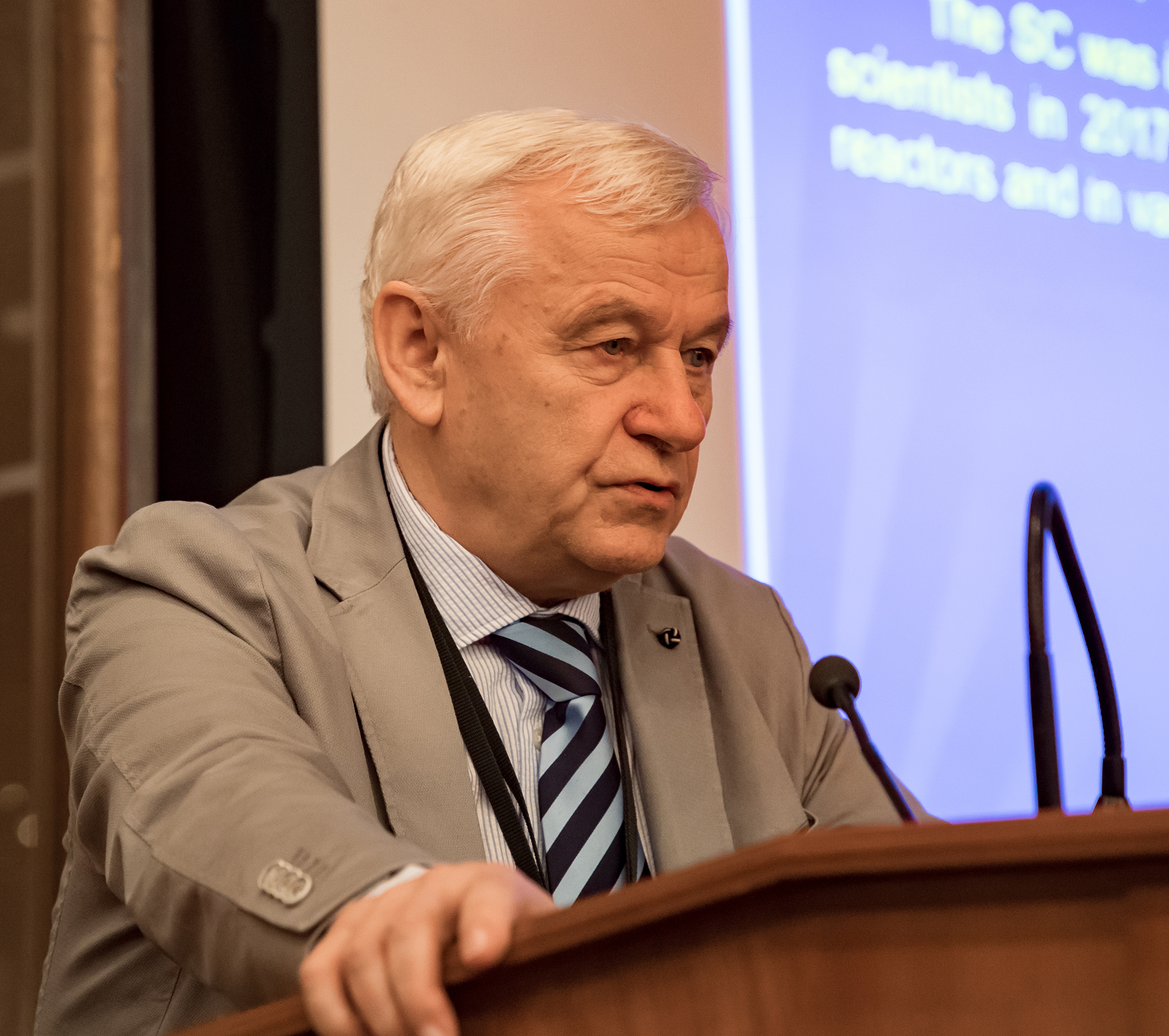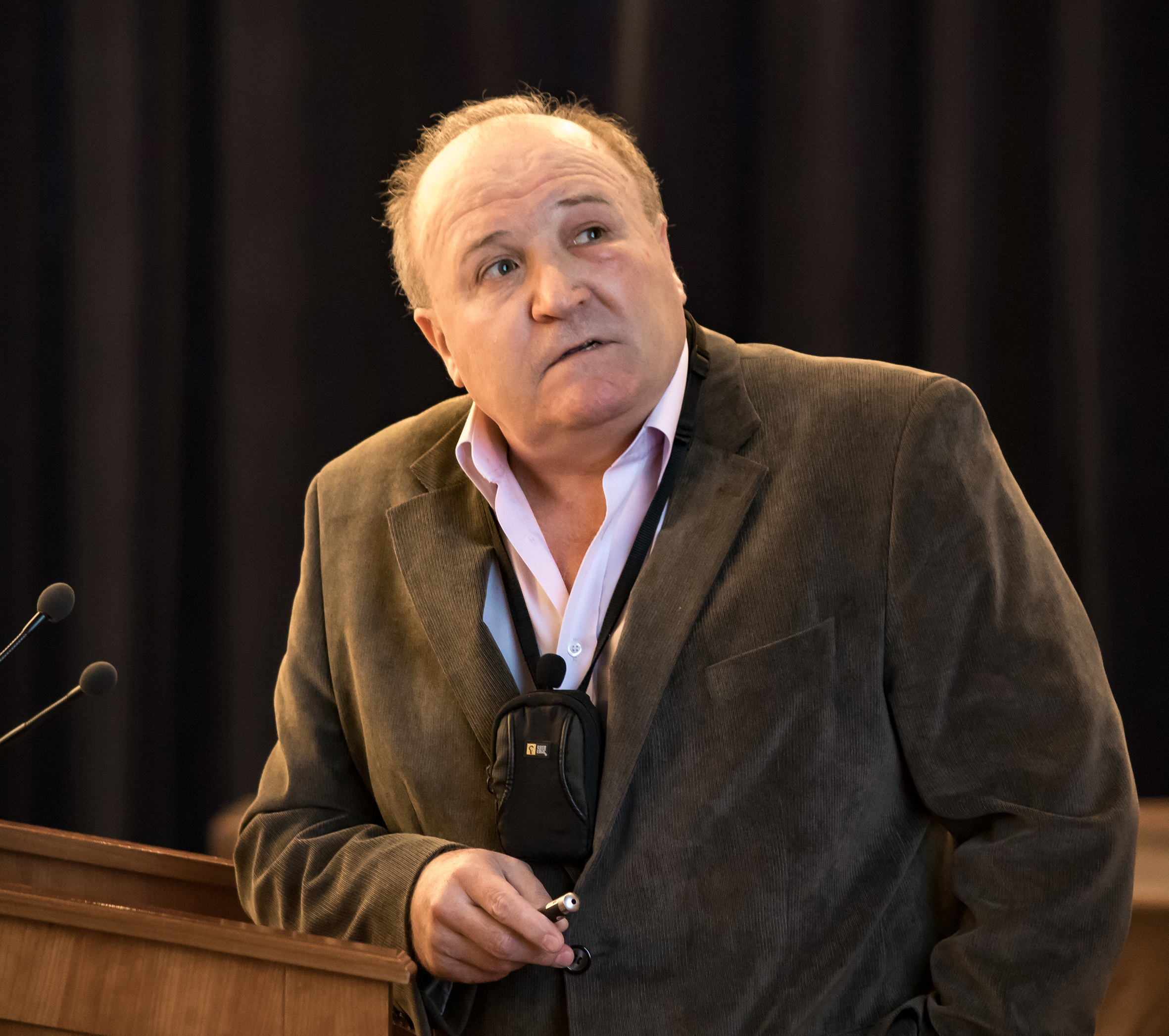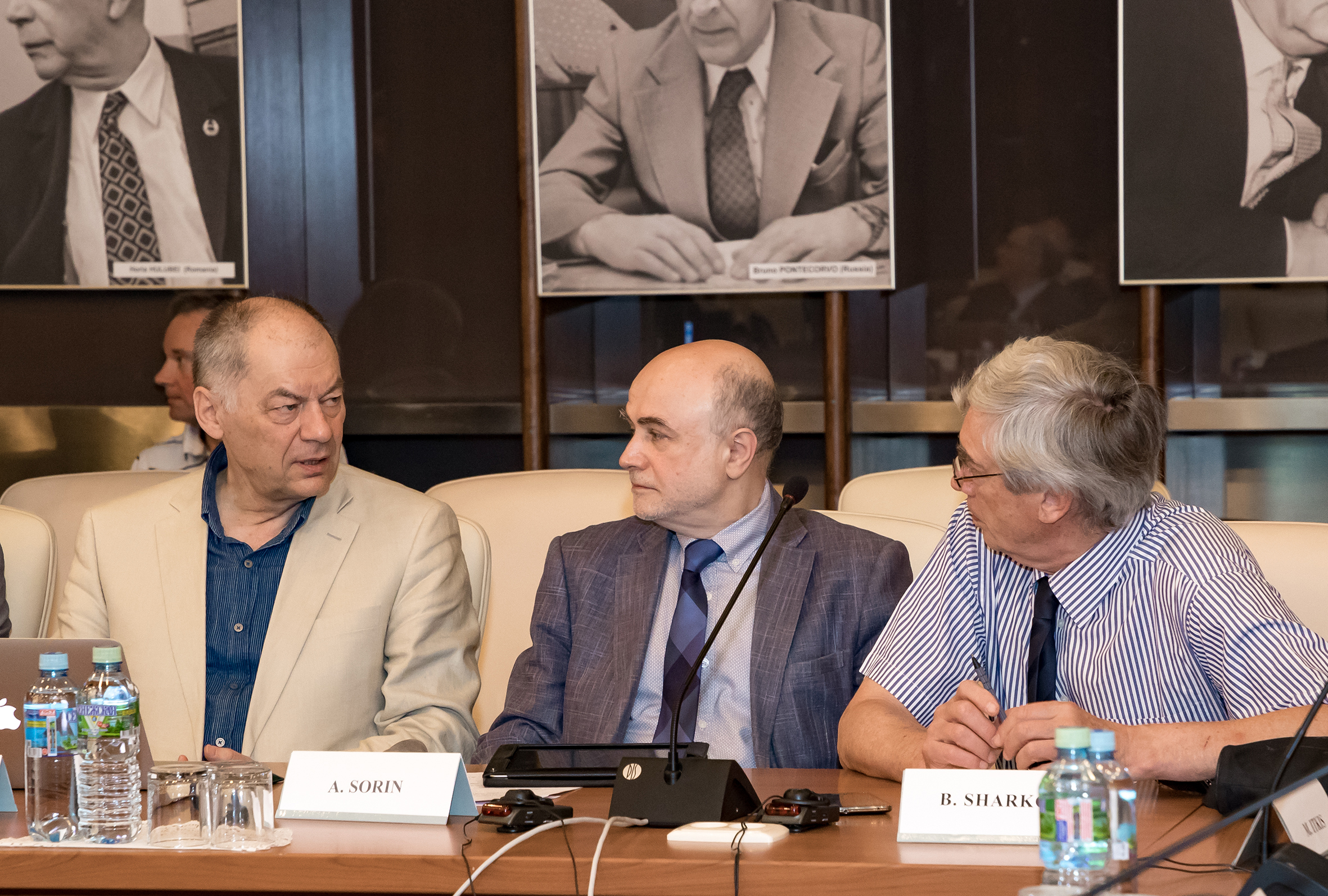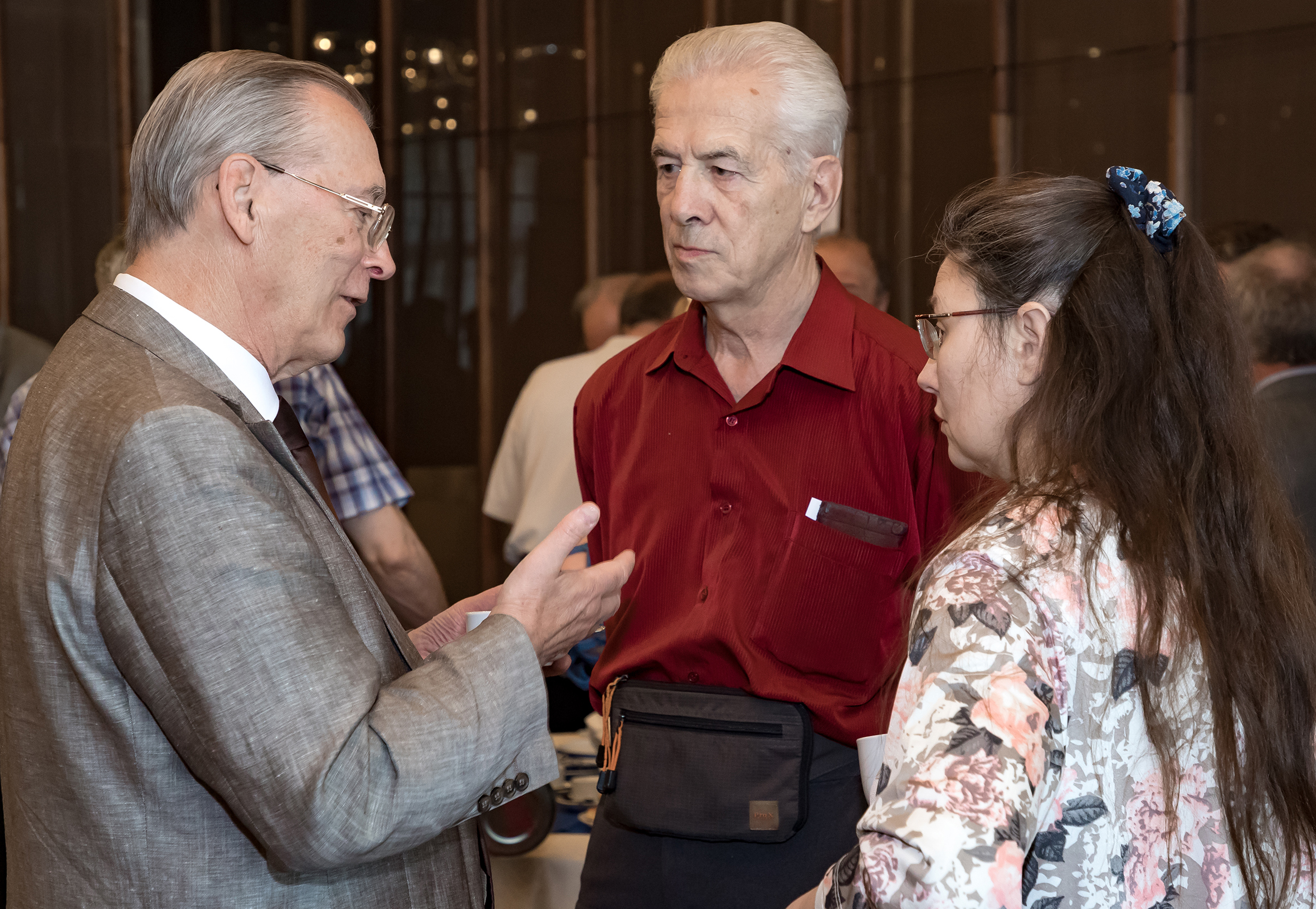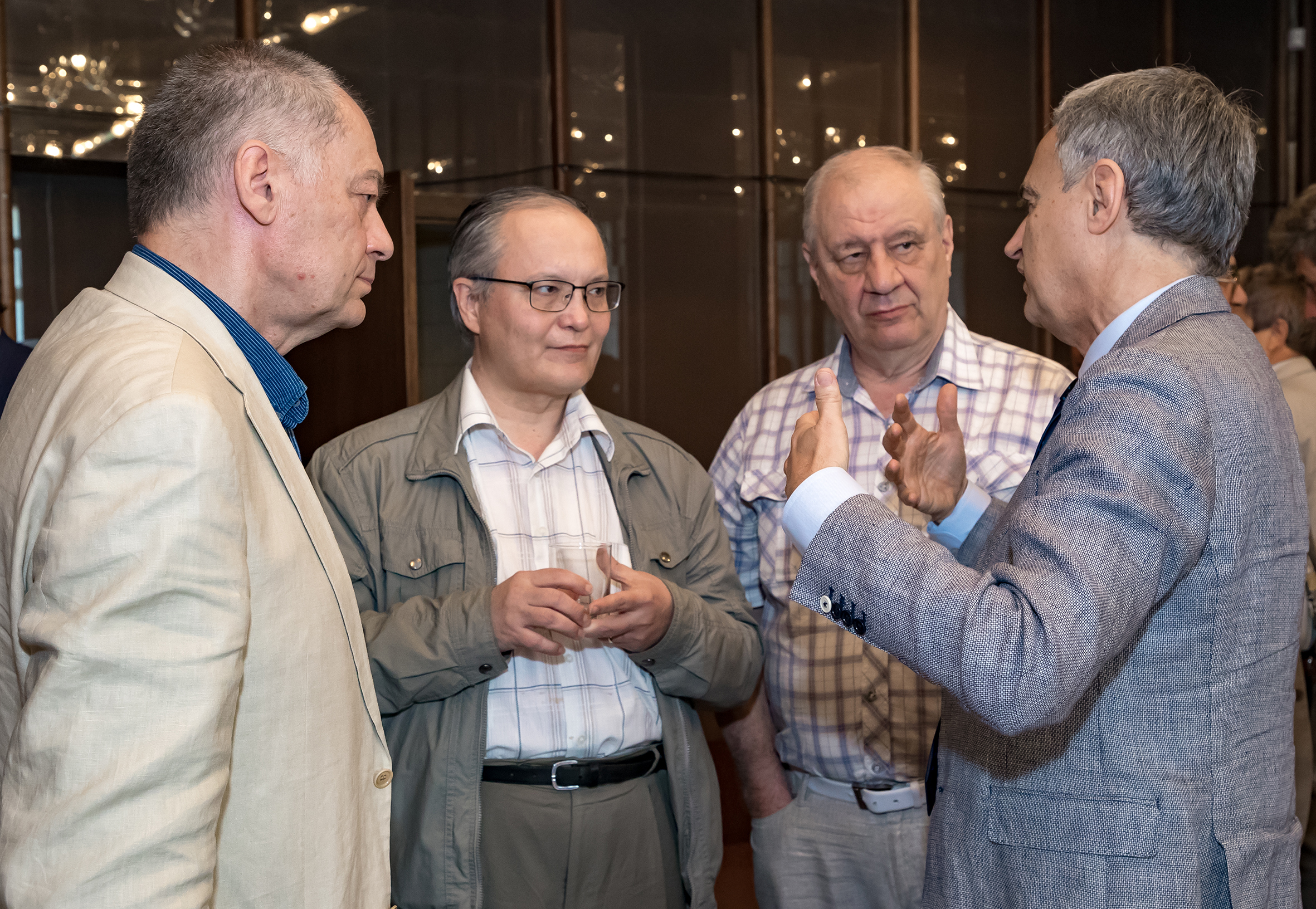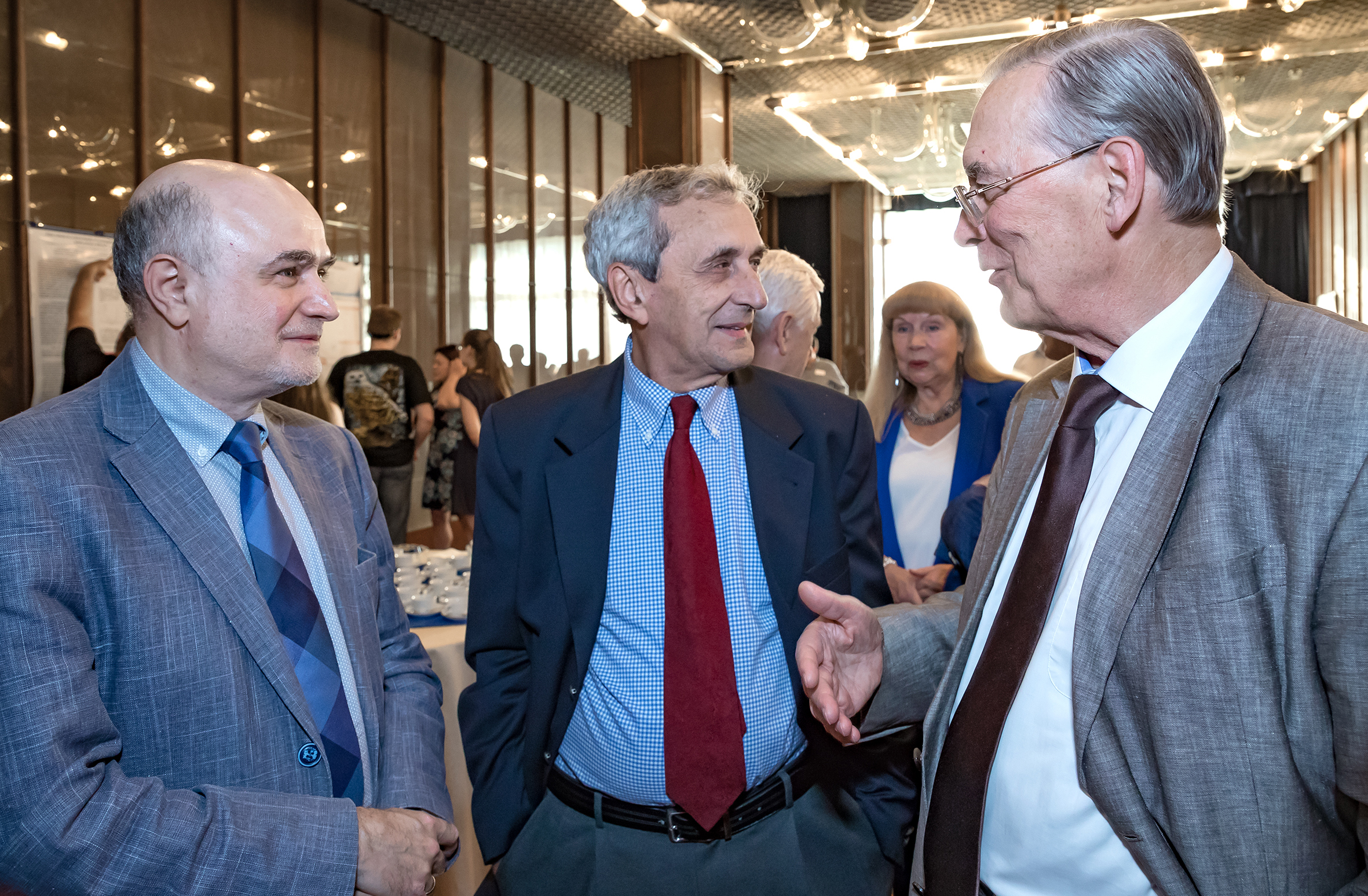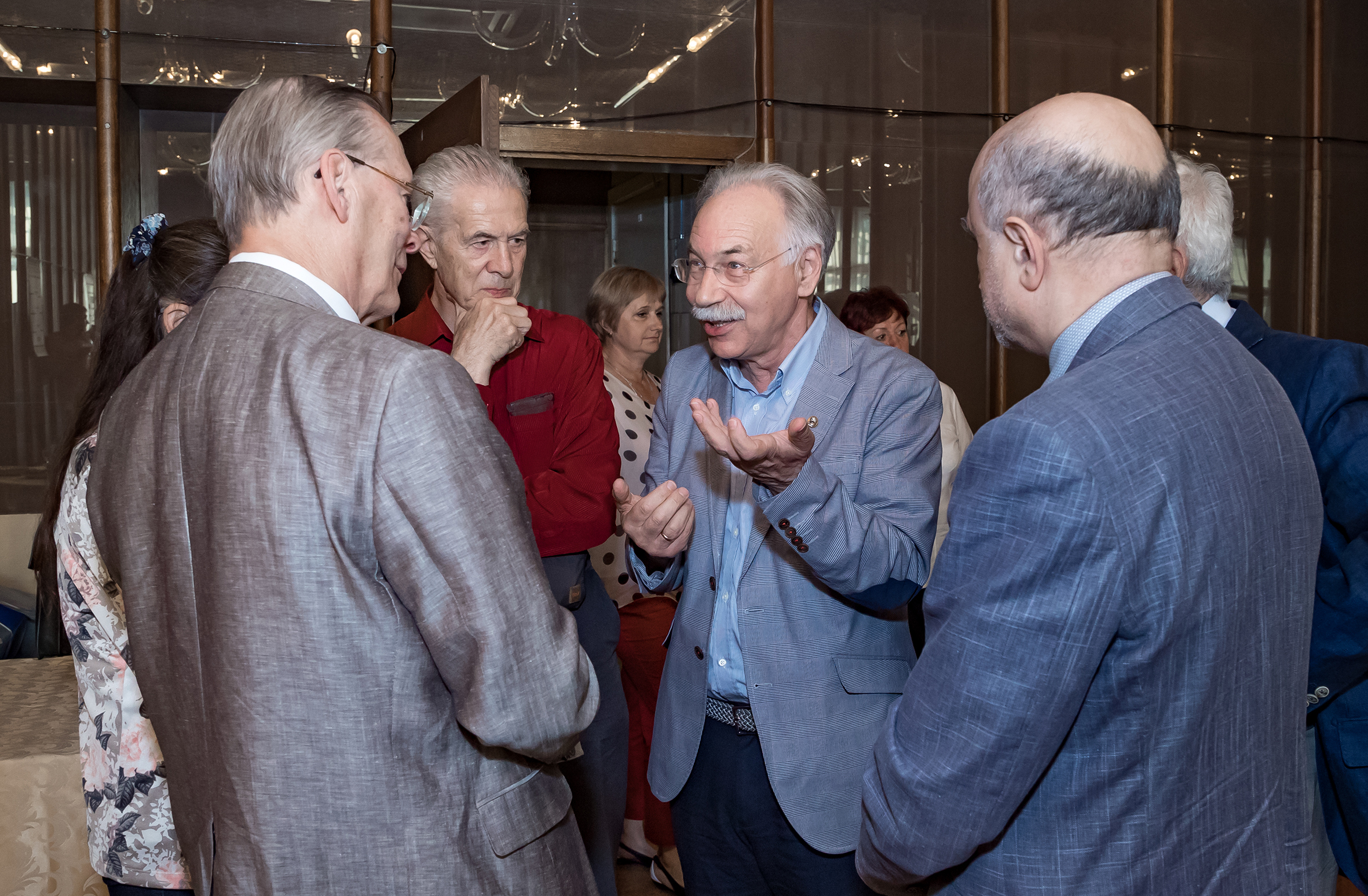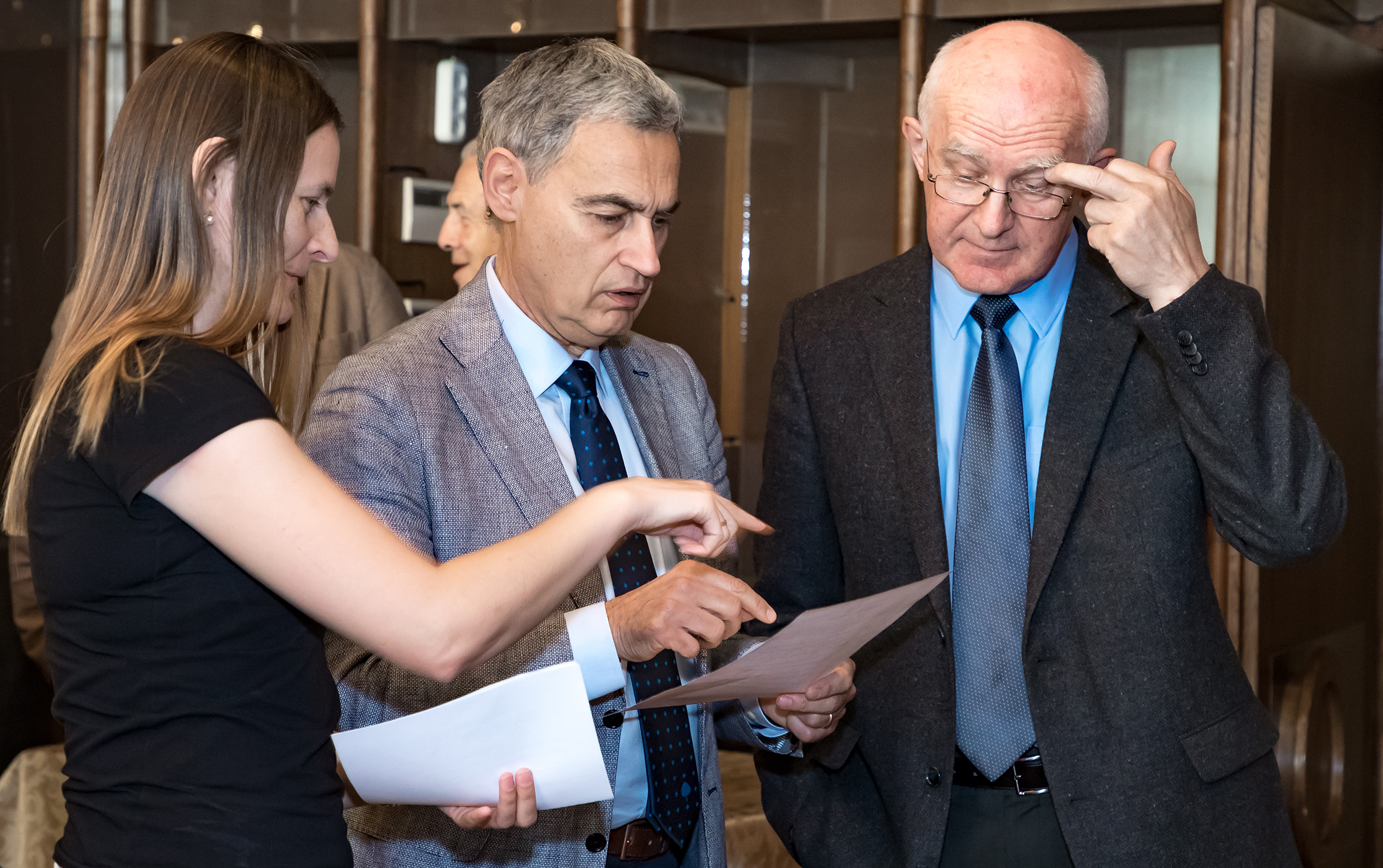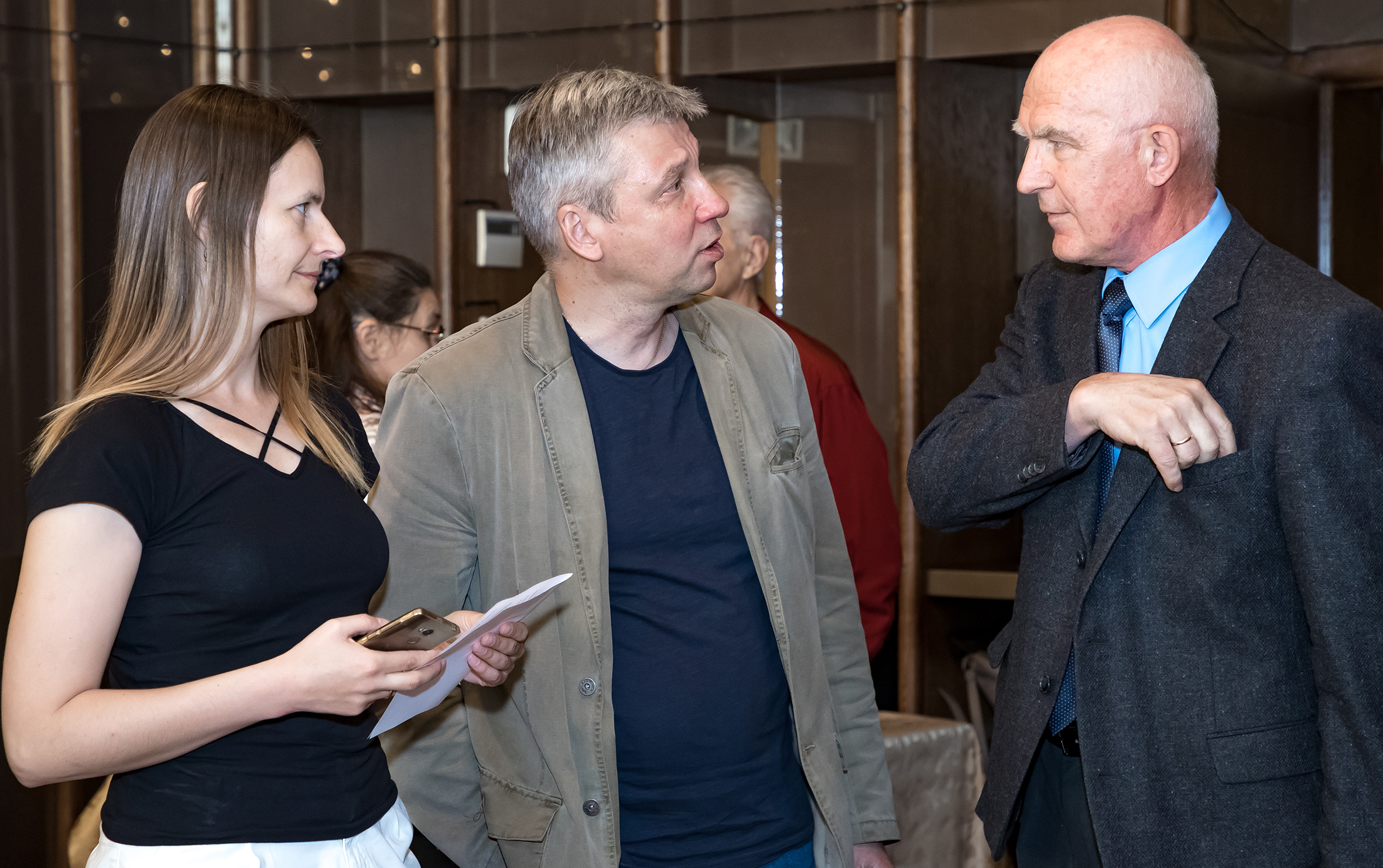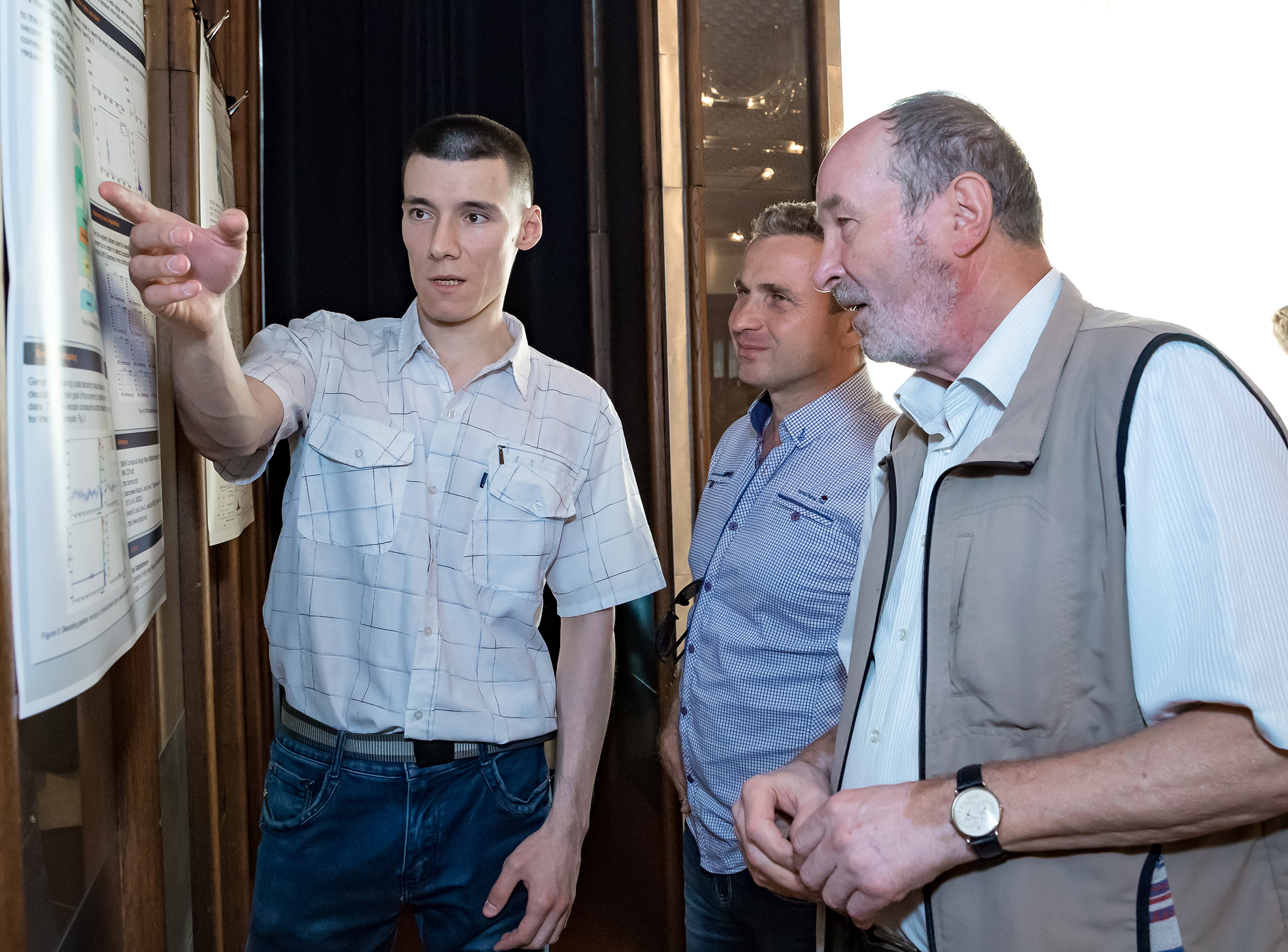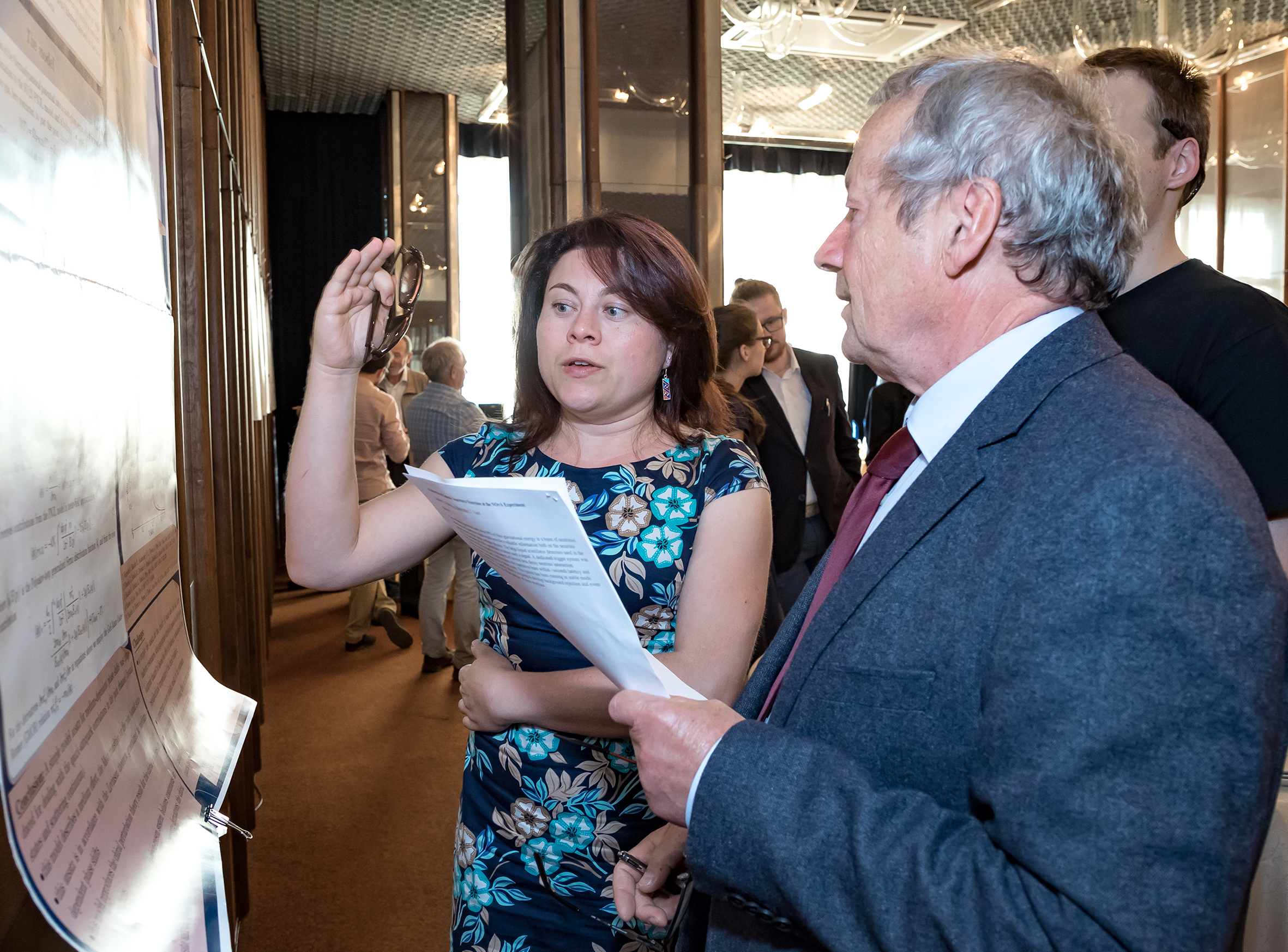On the milestones, new plans and projects
Organization, 28 June 2018
The 49th regular meeting of the JINR Programme Advisory Committee for Particle Physics was held on 18 – 19 June 2018 in the International Conference Hall, Dubna. The meeting was opened by Itzhak Tserruya who informed the audience about implementation of the recommendations of the 48th PAC meeting. JINR Vice-Director R. Lednický reported on the Resolution of the 123rd session of the JINR Scientific Council (February 2018) and on the decisions of the JINR Committee of Plenipotentiaries (March 2018).
DLNP Senior Researcher N. Russakovich spoke about the development of JINR’s long-range strategy. In particular, local committees and responsible persons in the following research fields were presented: particle physics, heavy-ion physics and spin physics, IT technologies, condensed matter physics, nuclear physics and radiobiology. The report comprised proposals for particle physics until 2030. VBLHEP Deputy Director R. Tsenov introduced members of the committee with similar plans in the fields of relativistic heavy ion physics and spin physics. PAC members highly appreciated reports devoted to such plans and expressed their wish to obtain relevant information on other fields of research as well.
***
As for the NICA project, a significant progress in informing the international scientific community about JINR activities and implementation of flagship projects were noted. The NICA project is already included in the ESFRI roadmap and the NuPECC long-range plan, efforts are being taken to make NICA a part of the European strategy in particle physics.
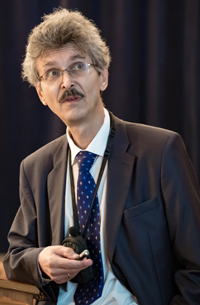 The audience appreciated the progress in the project’s implementation Deputy Head of the Accelerator Department A. Sidorin reported on. Particularly, successful completion of the 55th run at the Nuclotron, improvement of the beam’s quality, successful operation of the KRION-6T heavy ion source were highlighted. A. Sidorin told the journalists in the interview: “This time, we have held the run with the source’s prototype that was made to master the design of the real source for the NICA project. This prototype of the source has been already used in the second run. In the first one, it was used for accelerating argon ions; in the second one, it accelerated carbon, argon and krypton ions. It showed indestructibility, results reproducibility and comfort control.”
The audience appreciated the progress in the project’s implementation Deputy Head of the Accelerator Department A. Sidorin reported on. Particularly, successful completion of the 55th run at the Nuclotron, improvement of the beam’s quality, successful operation of the KRION-6T heavy ion source were highlighted. A. Sidorin told the journalists in the interview: “This time, we have held the run with the source’s prototype that was made to master the design of the real source for the NICA project. This prototype of the source has been already used in the second run. In the first one, it was used for accelerating argon ions; in the second one, it accelerated carbon, argon and krypton ions. It showed indestructibility, results reproducibility and comfort control.”
Coordinator of runs at the Nuclotron E. Strokovsky presented information about the 55th run. Particularly, 1018 hours were spent for the run 60 % of which were given to physicists for experiments.
From the report on development of the infrastructure, including the Nuclotron, delivered by VBLHEP Deputy Director N. Agapov, PAC members learned about the progress of construction work at the NICA complex and what efforts the Laboratory’s and the Institute’s directorates make to complete it in time.
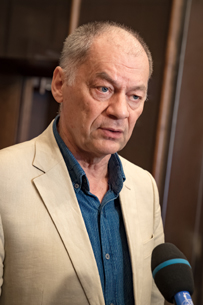 The report on the first collaboration meeting of the MPD and BM@N experiments at the NICA facility, which was held on 11 – 13 April 2018 at JINR, carried by JINR Vice-Director, VBLHEP Director V. Kekelidze was also met with great approval. V. Kekelidze told the city mass media: “It is a milestone event. Heads of institutes from 20 countries (Russia, Germany, France, Poland, the Czech Republic, Slovakia, Georgia, Azerbaijan, Armenia, the USA, Egypt and others) confidently expressed their desire to participate in the experiments at the NICA facility. The process of establishing the collaboration was launched, the committee of electors was established that will choose heads of two experiments. It is significant not only in terms of management but in terms of attracting new participants to the experiment as well. It is because every participant joining the project should realize his opportunities, career prospects and achieve the aspirations.”
The report on the first collaboration meeting of the MPD and BM@N experiments at the NICA facility, which was held on 11 – 13 April 2018 at JINR, carried by JINR Vice-Director, VBLHEP Director V. Kekelidze was also met with great approval. V. Kekelidze told the city mass media: “It is a milestone event. Heads of institutes from 20 countries (Russia, Germany, France, Poland, the Czech Republic, Slovakia, Georgia, Azerbaijan, Armenia, the USA, Egypt and others) confidently expressed their desire to participate in the experiments at the NICA facility. The process of establishing the collaboration was launched, the committee of electors was established that will choose heads of two experiments. It is significant not only in terms of management but in terms of attracting new participants to the experiment as well. It is because every participant joining the project should realize his opportunities, career prospects and achieve the aspirations.”
VBLHEP Senior Researcher V. Kolesnikov reported on progress towards realization of the MPD project, including simulation results. V. Kekelidze told the journalists about larger upcoming activities in the field: “Assembly of a large control solenoid magnet MPD, which will weigh almost 1000 tons, will be completed in a few days in the Czech Republic. Our team of engineers participates in this work; they regularly send us photos. As for the superconducting coil and the whole magnet complex, they are being produced in Italy. This work also conducted according to the plan, however, this equipment will be brought in Dubna when the next year navigation will be opened. So, in April-May, all elements of the magnet will be here and their assembly will start.”
Special attention of PAC members was paid to the reports dedicated to the BM@N experiment, namely “Progress towards realization of the BM@N project, including simulation results” by M. Kapishin and the report on the short range correlation study by E. Piasetzky. The committee highlighted successful bringing into operation of new detecting equipment, but recommended again to concentrate on analysis of the obtained data and completion of the detector’s configuration.
***
As for the reports on themes and projects approved for completion in 2018, it was decided to prolong the following projects until 2021:
- NA61 was presented by V. Kireev. PAC noted that the project was prepared according to recommendations of the 47th PAC meeting: JINR group started to participate in the data analysis, the number of participants was optimized. Three Candidate’s and two Doctoral theses were defended. However, the trip budget will be reduced as far as there will be no runs in CERN in 2019 – 2020.
- D. Madigozhin carried information on NA62. PAC deeply appreciated the results of the analysis of the data obtained in 2016, observation of the first candidate event for the π+vv decay and publication of first results.
- HyperNIS was presented by D. Krivenkov. Successful upgrade of the spectrometer, testing of a new trigger electronics and power system were highlighted.
- Information on ALPOM-2 was delivered by N. Piskunov. Modernization of the equipment was marked as well as installation of the large calorimeter, collection of data on azimuth asymmetry at heavy targets.
- M. Janek shared information on DSS. PAC affirmed a significant progress in gathering experimental data and success in development of polarimetry for deuteron and neutron beams at NICA using the new polarized ion source.
- STAR was reported on by Yu. Panebrattsev. PAC members greatly appreciated results acquired by the JINR group on study of antiproton-antiproton and Λ-Λ correlations and recommended to the group to share experience with the MPD team.
- HADES was presented by V. Ladygin. The main target of the project is to study properties of solid nuclear matter gained in heavy ions collisions. The committee called the JINR team to shift attention to dileptons measurement in the NICA project.
- “Precision laser metrology for accelerators and detector complexes” was reported on by M. Lyablin. PAC members affirmed the importance of the results achieved by the JINR team in cooperation with CERN and approved the plan of integration into the CERN net. However, PAC members believe that the team should use its experience in the NICA project.
PAC members heard the proposal on a new project “ARIeL: physics at future e+e- colliders” suggested by I. Boyko with interest. The aim of the project is to develop physical programmes for future electron-positron colliders such as CEPC, CLIC, FCC and ILC. The experimental part of the project was developed in the frames of cooperation with CERTN CLIC. PAC recommended approving this project until the end of 2021, but warned the authors about the existing international rivalry in suggested research that may influence the expected results of the work.
The following themes that were reported on were prolonged until the end of 2023: “Advanced studies on systems of new-generation accelerators and colliders for fundamental and applied research” presented by G. Shirkov, “Study of Neutrino Oscillations” reported on by A. Olshevskiy, “Dubna International Advanced School of Theoretical Physics (DIAS-TH)” presented by A. Filippov. In addition, new themes were approved, namely “Fundamental interactions of fields and particles” presented by D. Kazakov and “Modern mathematical physics: gravity, supersymmetry and strings” suggested by A. Isaev.
Competition of scientific papers prepared by young scientists was held at the PAC meeting. Nine posters were considered. The poster presentation “Is the third family of compact stars stable to hadron structures in the mixed phase?” by A. Ayryan was considered to be the best and will be presented at the following meeting of the JINR Scientific Council in September 2018.
The next meeting of PAC for Particle Physics will be held on 21 – 22 January 2019.
Galina Myalkovskaya, JINR Weekly Newspaper
Photos by Elena Puzynina, JINR Scientific Information Department



